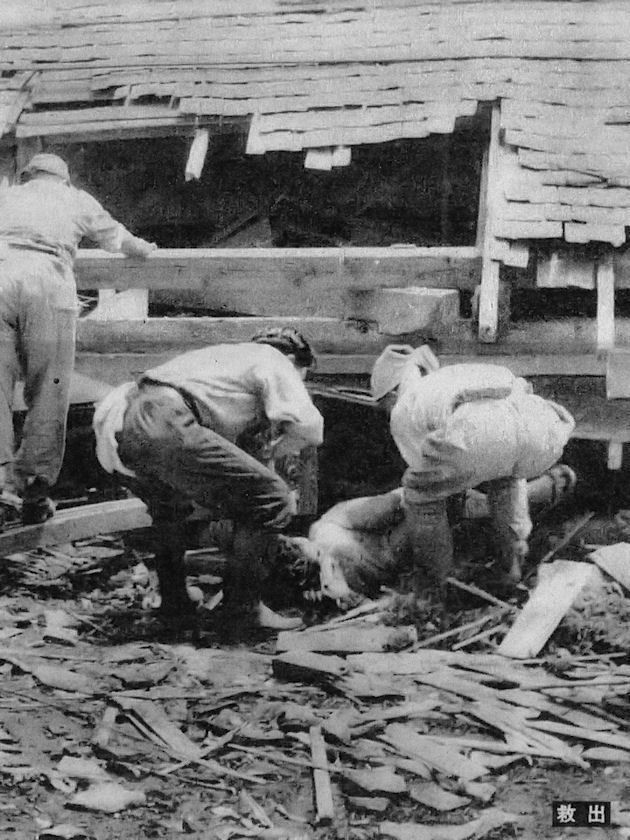Magnitude 6.8 Mw Max. intensity MM IXShindo 6 Total damage 1 billion USD | Depth 10 km (6.2 mi) Date 28 June 1948 Number of casualties 3,769 | |
 | ||
Origin time 16:13:31 JST (UTC+09:00) Similar 1945 Mikawa earthquake, 1891 Mino–Owari earthquake, 1964 Niigata earthquake, 1944 Tōnankai earthquake, 1946 Nankai earthquake | ||
The 1948 Fukui earthquake (福井地震, Fukui jishin) occurred in Fukui Prefecture, Japan. The magnitude 6.8 quake struck at 5:13:31 p.m.(JDT) on June 28. The strongest shaking occurred in the city of Fukui, where it was recorded as 6 (equivalent to the current 7) on the Japan Meteorological Agency seismic intensity scale. The shock occurred near the town of Maruoka.
Contents
GeologyEdit
This earthquake was caused by a strike-slip fault that was unknown until this earthquake. The fault stretches from Kanazu to Fukui, 25 km (16 mi) long, and was later named the "Fukui Earthquake Fault". Shaking was felt as far as Mito in the east, and Saga in the west.
DamageEdit
Damage was most reported in the Fukui plain, where the building collapse rate was more than 60%, since shaking became larger due to it being an alluvial plain, and many of the buildings were just built after the war and a little unstable.
At the time many people were cooking so after the earthquake many fires spread. Since the roads and the waterworks were damaged it took 5 days to put out the fires and so the fires caused devastating damage.
Even though the Daiwa Department Store collapsed, the Fukui Bank building right next to it had no significant damage. It is thought to have been because the Fukui Bank building had about 500 deep foundation pipes 10 meters deep in the ground.
Almost all of the farmers' houses in the epicenter area collapsed, but most of the farmers were outside so there were not many casualties.
CasualtiesEdit
At the time, it was the deadliest earthquake after the Pacific War (now preceded by the Great Hanshin earthquake and the Tōhoku earthquake and tsunami). This earthquake killed 3769 people, mainly in Sakai City (then part of Fukui City), where the death rate was more than 1%.
